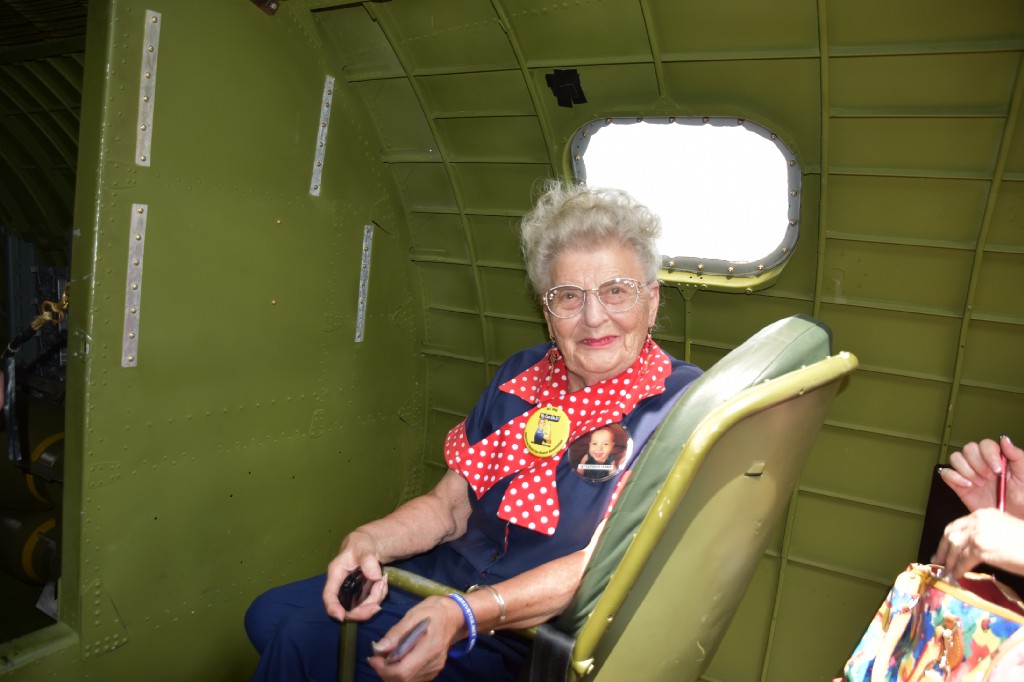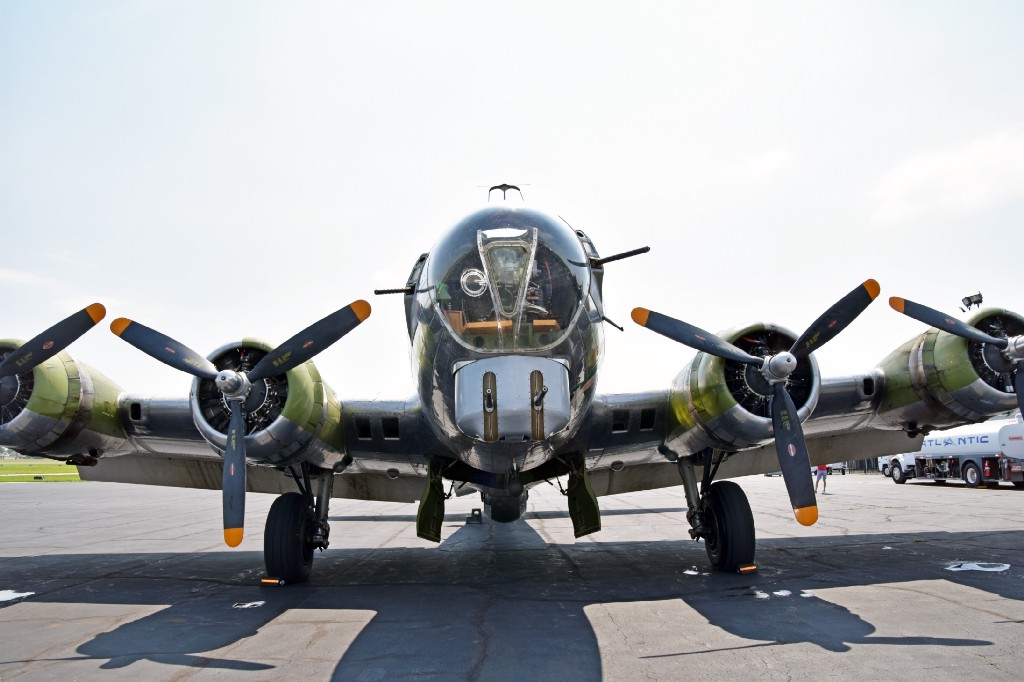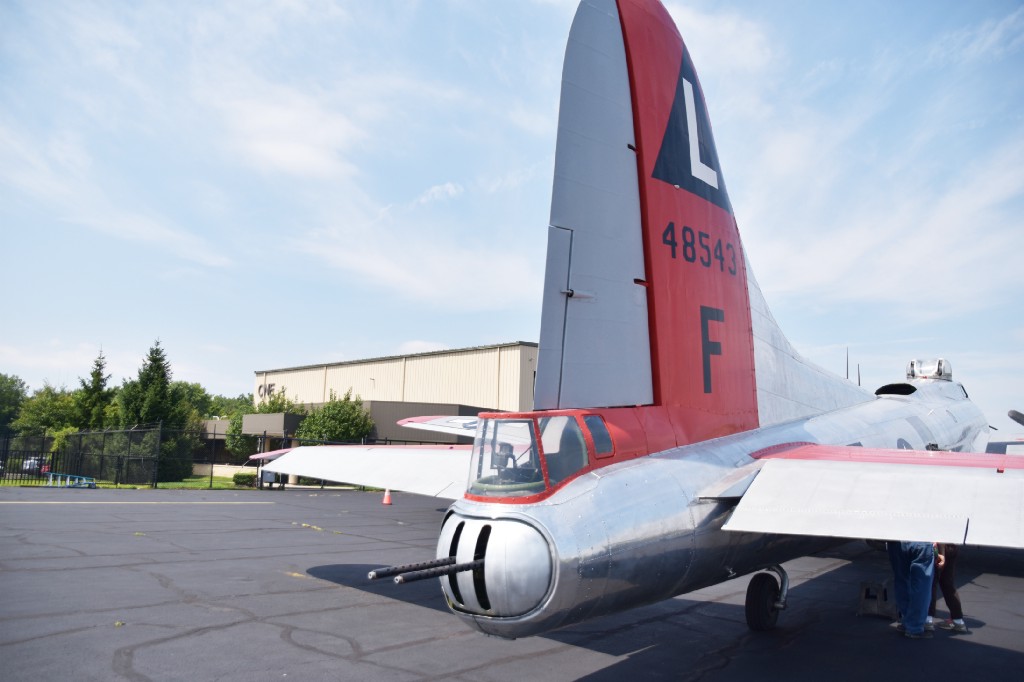Aerial and ground tours of an iconic WWII aircraft will be offered at Northeast Philadelphia Airport this weekend.

During World War II, the Boeing B-17 plane flew the skies as a near-indestructible combat machine. This weekend, it will take to the skies again.
Liberty Foundation, a flying museum nonprofit, is hosting an aerial and ground tour of the retired war aircraft, one of only 12 remaining in the country that can still fly. It will be offered at the Northeast Philadelphia Airport as part of the 2017 Salute to Veterans tour, meant to support all veterans.
In fact, one particular veteran got her very first look inside the plane earlier this week. Mae Krier was a Rosie the Riveter — a famous World War II icon commonly depicted as a woman wearing a red bandana and flexing her arm muscles.
With other “Rosies,” Krier helped construct planes that were used in combat or other purposes at the young age of 17. She helped construct the interior of the wings — a complex webbing of metal parts integral to the plane’s performance.
Standing under the wing, Krier gestured up to the complex mechanics, only a fraction of which are visible from the outside.
“I don’t know how I did that,” she said with a laugh. “We were so young and naïve.”
Unfortunately, the plane could not take flight the day Krier was there, but it was her first time seeing the interior of the B-17 — of which she had contributed to building “countless” models.
“I’ve waited and waited to see,” Krier said. “I had no idea what it looked like on the inside.” Once she and the Rosies had completed their part on the wings, it was taken away to continue production.
“It was my bucket list,” she said.
Now at 92 years old, Krier is just getting started. She’s working on getting a national day declared for Rosie the Riveter, and says it may be voted on as early as next year.
“I never in a million years imagined I’d get this much publicity,” she said. She said she had been reaching out to media outlets for years before one outlet picked up her story. It’s been a nonstop ride since.
Nobody knows how many of the aircrafts Krier contributed to. Between 1935 and 1945, there were 12,732 B-17 aircrafts produced, and roughly a third (4,735) were lost in combat. The planes saw continued use in Korea, Israel and Vietnam after WWII.
The plane quickly became a symbol of World War II. Liberty Foundation pilot Ron Gause said the machine could withstand more battle damage than any other craft ever built.
The plane could carry up to 4,000 pounds of bombs. The greatest threat to fighters aboard the craft was shrapnel flying through the air. Enemies would aim for the tail or the cockpit so pilots would lose control.

Aboard the craft, it’s clear it’s no commercial airliner. Taller passengers have to duck while climbing aboard and standing in the hull, and the cockpit is separated from the central hub by a thin gangplank that stretches over a floorless section of the craft (there was a floor, but it would often open to drop bombs). About a dozen replica machine guns flank the craft’s front, back and sides. When the engine starts, it’s hard to hear (or smell) anything else. This particular aircraft is known as the Madras Maiden. It was built toward the end of the war, which meant it never saw any combat, but was used for research development.
The craft was eventually sold to Albany Building of Florida, which used it as a means of cargo shipment to haul produce between the Caribbean and Florida. She was sold again in 1963 and converted into a fire ant sprayer. It wasn’t until 2016 that Liberty Foundation, based in Claremore, Oklahoma, purchased the vehicle to honor veterans.
“One of the unfortunate things about air combat is there are no battlefields that can be visited,” said David Lyon, a pilot for Liberty Foundation. “These battles took place in the air and as soon as it’s over, it disappears.”
Tours will be offered from the Northeast Philadelphia Airport Saturday, Aug. 26, and Sunday, Aug. 27, from 10 a.m. to 2 p.m. every hour on the hour. Tickets cost $410 for Liberty Foundation members and $450 for non-members. The cost is due to the high operating expenses of the machine; it costs $5,000 per hour of flight, as it burns 50 gallons of fuel per hour. Liberty Foundation spends $1.5 million a year to keep the craft airworthy. Ground tours will run from 2:30 to 5:30 p.m. They are free of cost, and donations are accepted.
“It’s an investment into what our history was, and it’s a chance to connect to that history,” Lyon said. ••
Call 918–430–0243 to set up a tour or for more information. Visit Liberty Foundation’s website at LibertyFoundation.org






